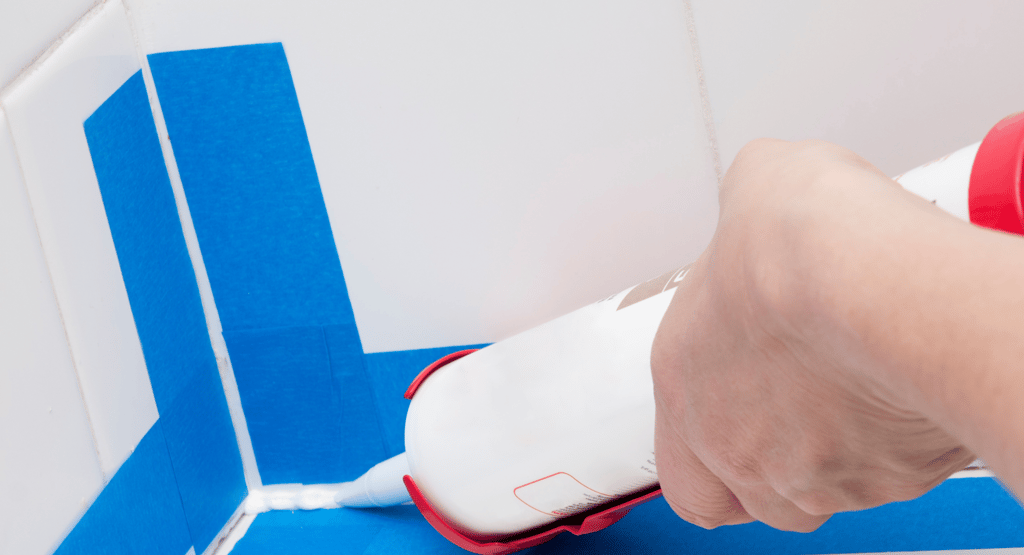Home Maintenace Tips: Interior Caulking
When it comes to maintaining your home, interior caulking often gets overlooked. However, keeping your caulking in good condition is essential for preserving your home's integrity and ensuring a comfortable living environment. Here’s why regular interior caulking maintenance should be on your home care checklist.


When it comes to maintaining your home, interior caulking often gets overlooked. However, keeping your caulking in good condition is essential for preserving your home's integrity specifically in places such as your kitchen & bathrooms. Here’s why regular interior caulking maintenance should be on your home care checklist.
Why Caulking Matters
Caulking serves as a barrier against moisture, air leaks, and pests. It’s used around windows, doors, sinks, tubs, and other fixtures to seal gaps and cracks. Over time, caulk can deteriorate, crack, or peel away, compromising its effectiveness. Ignoring damaged caulk can lead to a host of problems, including:
Water Damage: Cracked or missing caulk allows moisture to seep into walls and floors, leading to mold growth, rot, and structural damage.
Energy Loss: Gaps around windows and doors let in drafts, causing your heating and cooling systems to work harder and increasing your energy bills.
Pest Infestations: Unsealed cracks provide easy entry points for insects and rodents, leading to potential infestations.
Aesthetics: Worn-out caulk can make your home look neglected and unsightly, reducing its overall appeal. Over time caulking can change colour. Think of a fresh line of caulk like a fresh coat of paint.
Signs Your Caulking Needs Attention
Regular inspection of your home’s caulking is crucial. Look for the following signs that indicate it's time to re-caulk:
Cracks and Gaps: Visible cracks, gaps, or holes in the caulking.
Peeling or Flaking: Caulk that is peeling away from the surface.
Discoloration: Stains or discoloration, can indicate mold or mildew growth.
Drafts and Leaks: Feeling drafts near windows and doors or noticing leaks around sinks and tubs.
How to Maintain Interior Caulking
Maintaining interior caulking is a straightforward task that can be tackled by most homeowners. Here’s how to do it:
Inspect Regularly: Check the caulking around windows, doors, and plumbing fixtures every few months.
Remove Damaged Caulk: Use a utility knife or caulk remover to scrape away old, damaged caulk.
Clean the Area: Wipe the surface clean with a damp cloth to remove any debris and let it dry completely. You may also use TSP or rubbing alcohol to clean it effectively.
Apply New Caulk: Using a caulking gun, apply a smooth, even bead of caulk along the joint. Choose the right type of caulk for the area—silicone-based for areas exposed to water and acrylic latex for dry areas. If you are unsure, ask a salesperson.
Smooth It Out: Use a caulk smoothing tool or your finger dipped in water to smooth the caulk for a neat finish.
Let It Cure: Allow the caulk to cure as per the manufacturer’s instructions before exposing it to water or paint.
Professional Help
While DIY caulking maintenance is feasible, sometimes professional help is needed, especially for larger jobs or areas that require special attention. A handyman service can ensure that your home’s caulking is applied correctly and efficiently, saving you time and effort. Visit our trusted partners page for our recommendation.
Interior caulking maintenance is a simple yet crucial part of home upkeep that can prevent significant problems down the line. By keeping your caulking in good condition, you protect your home from water damage, energy loss, and pest invasions while maintaining its aesthetic appeal. Regular inspections and timely repairs can help you avoid costly repairs and keep your home comfortable and secure.
For expert advice or recommendations give Joe a call at (204) 384-8171!